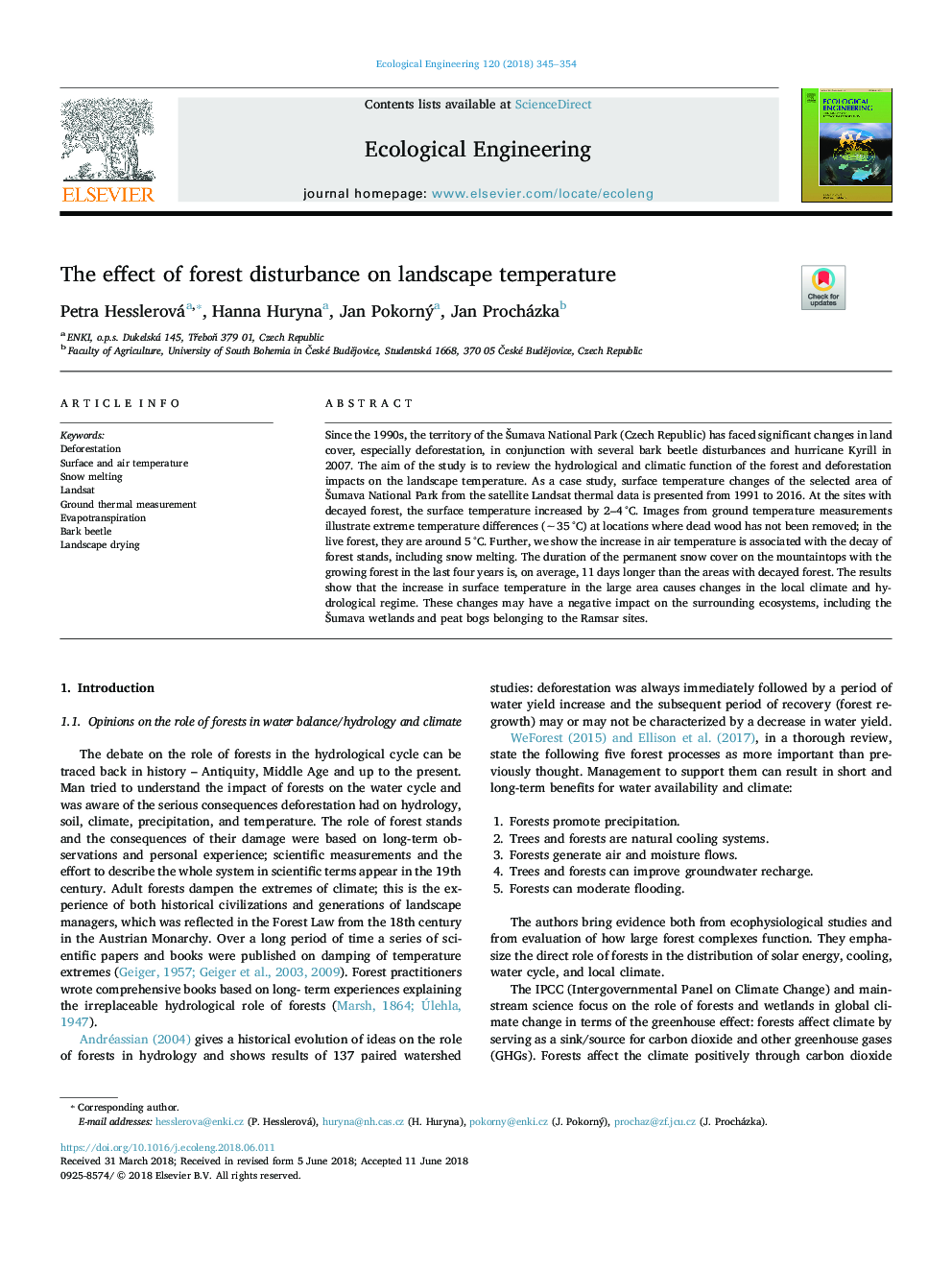| Article ID | Journal | Published Year | Pages | File Type |
|---|---|---|---|---|
| 8847810 | Ecological Engineering | 2018 | 10 Pages |
Abstract
Since the 1990s, the territory of the Å umava National Park (Czech Republic) has faced significant changes in land cover, especially deforestation, in conjunction with several bark beetle disturbances and hurricane Kyrill in 2007. The aim of the study is to review the hydrological and climatic function of the forest and deforestation impacts on the landscape temperature. As a case study, surface temperature changes of the selected area of Å umava National Park from the satellite Landsat thermal data is presented from 1991 to 2016. At the sites with decayed forest, the surface temperature increased by 2-4â¯Â°C. Images from ground temperature measurements illustrate extreme temperature differences (â¼35â¯Â°C) at locations where dead wood has not been removed; in the live forest, they are around 5â¯Â°C. Further, we show the increase in air temperature is associated with the decay of forest stands, including snow melting. The duration of the permanent snow cover on the mountaintops with the growing forest in the last four years is, on average, 11â¯days longer than the areas with decayed forest. The results show that the increase in surface temperature in the large area causes changes in the local climate and hydrological regime. These changes may have a negative impact on the surrounding ecosystems, including the Å umava wetlands and peat bogs belonging to the Ramsar sites.
Related Topics
Life Sciences
Agricultural and Biological Sciences
Ecology, Evolution, Behavior and Systematics
Authors
Petra Hesslerová, Hanna Huryna, Jan Pokorný, Jan Procházka,
